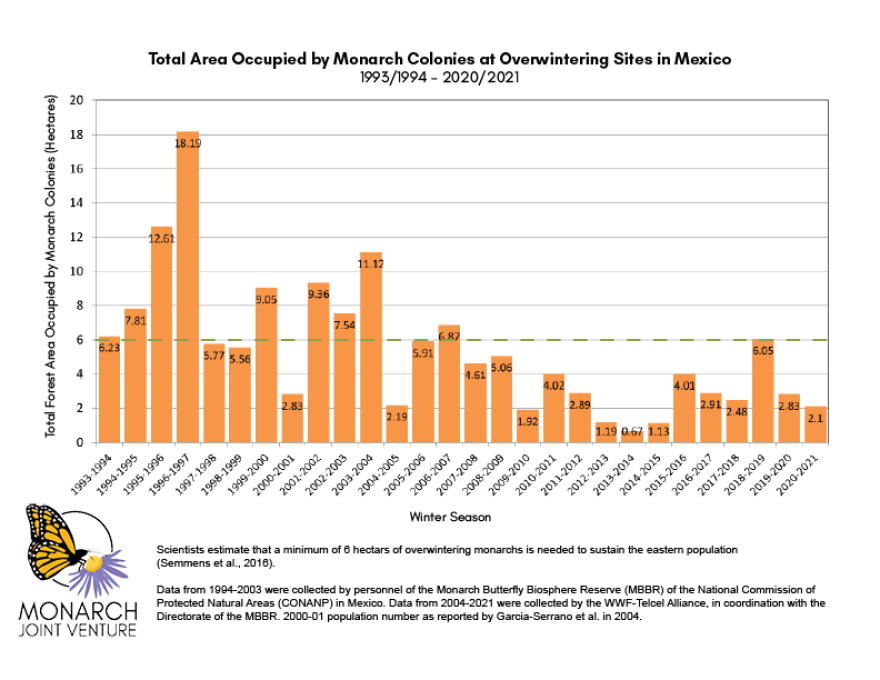The monarch butterfly population has plummeted to 20 percent of what it was in the early 1990s, according to a nonprofit that tracks the insects.

Researchers are finding there's more than one reason.
First, monarchs need native milkweed plants for reproduction and food. They used to be common in farm fields, growing between the rows of crops such as corn and soybeans.
Then, in the last few decades, the widespread use of an herbicide called Round Up — generically called glyphosate — started wiping out milkweed.

“What happened is they started spraying glyphosate really, really broadly, and that would kill all the milkweed in between those row crops,” said Elise Zipkin, an associate professor and quantitative ecologist at Michigan State University.
Also, fewer monarchs are surviving the late fall migration to Mexico where they spend the winter. That’s possibly because of a parasite that attacks adults and renders them unable to fly. Additionally, there seems to be a shortage of nectar to feed on as the butterflies make their way south.
And finally, to develop, monarch eggs need temperatures to be near average, but climate change has meant more volatile temperatures.
“So we found that the size of the population was very highly linked to what those climate conditions were especially in the spring, but also in the summer too,” Zipkin said.
Conventional wisdom is that people should plant native milkweed in their backyards to make up for the losses in farm fields, but biologists are now encouraging people to support efforts to plant milkweed in natural areas that are better refuges for monarch butterflies. They also advocate supporting the agencies setting aside land for monarchs and other pollinators.






